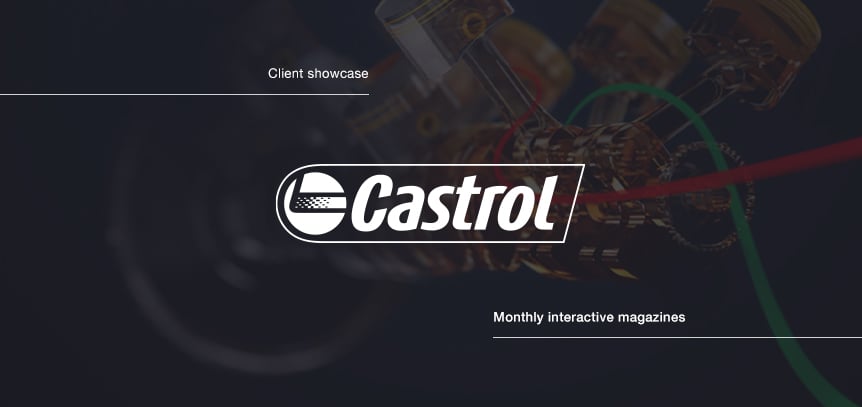
The 8 key trends shaping the future of content marketing for energy and utility brands
Content marketing is always evolving, so what’s next? Simon Cox offers his views on how the water industry can embrace new trends in content marketing.
The water industry is often stereotyped as old-fashioned, and it is this perception that will either make or break our industry. Fortunately for us at Hydro International, we have been looking into combining our ‘hard’ sell of technical products alongside the more ‘soft’ storytelling marketing. You can’t be a product today, you can’t just sell on technical features: it has to be about what trends are appearing on the market, and ultimately, what is driving the consumer. Simply put, we have to be authentic.
The market has changed, and the water industry now has to go beyond just ‘supplying’ a utility service; consumers are looking to their providers for tips and suggestions. The industry is now at an inflection point, making it ripe for content marketing disruption.
1. Content needs to be timely and tailored
In our industry, we have to liaise with both engineers, builders’ merchants and distributors. And our content has to take into consideration their business needs and schedules. We have a very small window to grab the attention of builders’ merchants or distributors — they won’t be sat around on a computer, they will be out on the field. So, we have to give them something really compelling to get their attention and keep it. That means tailoring our content to suit their needs. A stronger, shorter, pithier call to action. Or simply looking at some stronger offers that can develop into a quick turnaround.
If it was an engineer, we’re not going to have a webinar. With a contractor, it’s about getting straight to the point with something really tangible, like rebates or reminder alerts, as a way to remind them that if they work with us, it can help them get their project delivered much quicker.
2. Some marketing strategies are having a renaissance
At Hydro International we recognise that one of our core marketing demographics are away from their computer often. Yet many of our clients have access to a phone, which means they have access to marketing content. The benefit to using SMS is that you are able to reach your customer or target market immediately; it’s a direct link. And it helps that mobile technology has come on as well. An SMS five years ago was just words. Now it can be pictures, hyperlinks, video, all kinds of things. Using modern marketing techniques for an industry such as ours is incredibly lucrative, it allows us to be one step ahead of our competitors and gives us that little bit of an edge.
3. Streamline your social media channels
Our outreach for our company mainly resided on LinkedIn, Twitter and Google+. We noticed that our Twitter and Google+ gathered a fair bit of interest — not big numbers, but we got some impressions, we got some clicks. Yet none of that transmitted through to web traffic. The lesson to be learned from that is to make sure the chosen medium is aligned with your business goals. Twitter and Google+ are fine when used as general awareness channels. But I want to prioritize where we’re going to get most return for our social media content, so we’ve decided to focus on LinkedIn for that reason.
Having a broad-brush strategy may be more effectively for some marketing departments, but for us having a more balanced approach made more sense. Our wider customer experience is more traditional, so social media platforms such as Linkedin translate well for our business needs. Any approach depends on previous marketing exposure, and ultimately, what feels right.
4. We work in a conservative industry — but content marketing can change that
Our industry is quite slow-moving, quite old-fashioned, so the general consensus is that because of this, we must stick to the old ways of marketing, such as trade press or trade shows.
That is a false way of thinking for our industry. Everyone who’s in the water industry also exists as a person in the rest of their life. They’ve all got a smartphone. They’re all on Facebook, they’re all on LinkedIn. In my mind, it’s the same as any other industry. It’s knowing your audience, knowing where they are and what they care about and don’t care about, and then just aligning your channels and your messages to that. It sounds easier than it is, but I don’t think there’s any trick to this particular industry.
5. It’s wise to be cautious about innovation
But having the perception of the water industry as conservative is a double-edged sword. Of course, water companies do have innovation targets, they’re supposed to be looking at new technologies. One way in which we brand ourselves is ‘challenging convention’ rather than ‘proving innovation’.
The reason for this is you can make customers feel they are part of a forward-thinking strategy, and at the same time you can also paint existing technologies as merely being ‘conventional’. So in that respect, it works really well, in terms of the products that we offer and trying to present them in different ways in stating that message.
Yet there is reticence. There is a lot of risk in our industry — particularly in cost. A new waste treatment plant, for example, is a big investment. We’re talking five, six and maybe seven-figures. Cautious optimism and pragmatism is crucial.
6. Data will shape the way the water industry does content marketing
The water sector is only starting to discover the potential that data-driven insights can offer. Having a CRM system fully implemented means we can gauge focused and well-informed conversations with our customers about their issues, to anticipate their needs and to tailor services to them.
The best way to implement an effective content marketing campaign here is to leverage data to determine the appropriate target and how to deliver the message at the right time via the right channel.
Data visualization is key too. By pinpointing any correlations between contacts who watch a webinar and follow with a lead, we can determine what effective channels are and where our points of contact are most valuable. It will help us shape things differently.
7. Content marketing is now within a buyer’s market
One little misstep by an organization and the consumer will just go to the competitor. One click back and you’ve lost a potential lead for something quite menial. All industries need to be mindful of how they market themselves. This includes both our audiences, but also our distributors. They need information the same as a buyer would. It’s important to recognize that our behind-the-scenes marketing and internal marketing has to be as good as our external. We don’t want there to be conflict with our distributors when they’re a vital part of our company.
8. A brand needs to be internally and externally consistent
It’s easy to spot where there is an inconsistency in the interaction between what the brand promises and what it actually does. It’s similar to when you go to a bank, they say: ‘We’re all about you and customer service’ and you have to wait 20 minutes to see someone and they’re not really paying attention.
A lot of industries forget that customers respond to having a consistent face and personality throughout their interaction with you. This principle should apply to content marketing too. If you don’t have consistent quality and consistent publishing, you’re not taking advantage of all the opportunities you have to connect with your audience. It has to be as positive as possible to keep your audience engaged, your brand top-of-mind, and your content strategy worthwhile.
We interviewed other bright-spark CMOs about what they think will shape next year. Read about it here: The Future of Content Marketing: 10 interviews with leading CMOs on the trends they’re using to disrupt in 2019.
Read the latest positioning trends and insights.
Tap into our brand and product positioning, storytelling, and creative expertise to inspire your next strategic move.

